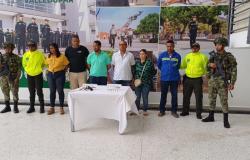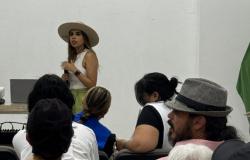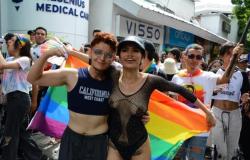
CÓRDOBA, June 12. (EUROPA PRESS) –
The Museum of Fine Arts of Córdoba, managed by the Ministry of Tourism, Culture and Sports, inaugurated this Wednesday the exhibition ‘Mateo Inurria. Portraits’, in which, through 29 sculptures and a series of photographs and drawings, the portrait is analyzed in the artist’s production, thus adding the museum to the program of the centenary of the death of the Córdoba sculptor Mateo Inurria (1867- 1924).
The exhibition, which can be visited starting this Wednesday, brings together a selection of the sculptor’s best works from the collections of the Córdoba art gallery, an institution that houses the largest existing collection of sculptures, drawings and other belongings from Inurria, whose death The 100 years were celebrated on February 21. Now, coinciding with the year of this anniversary, the Córdoba art gallery has scheduled the first exhibition on this theme by the sculptor born on Alfaros Street in Córdoba.
The exhibition proposal of the Fine Arts revolves around the portrait, how the human face is present in the sculptor’s work, both in sculptural pieces and in drawings or snapshots. In this way, along with the 29 sculptures, photographs are shown referring to works whose whereabouts are unknown or are part of commemorative monuments, which makes their presence in the room impossible. Most of these images belong to Inurria’s personal archive, making the exhibition an event of enormous value for the understanding and appreciation of his work.
In this regard, the territorial delegate of Tourism, Culture and Sports, Eduardo Lucena, has highlighted that, “with this exhibition, the Museum of Fine Arts reaffirms its commitment to the figure of the immortal sculptor from Córdoba, as well as its mission to preserve, investigate and disseminate the cultural values that their productions embody.”
The exhibition is curated by one of the greatest specialists in the sculptor’s work, Ramón Montes, who has recognized his “fall in love” with the work of Mateo Inurria since he was eleven years old, “the fruit of lust and aesthetics,” in his “visits to the Julio Romero de Torres Museum and the old Museum of Fine Arts, and in Mateo Inurria’s room the first thing we saw was the three ages of women, that magnificent work. As time went by, I wrote my doctoral thesis about Mateo Inurria and I have spent more than a decade working on the museum’s collection.
In ‘Mateo Inurria. Portraits’ the pieces will be articulated in four thematic blocks: ‘Typism’, ‘Idealization’, ‘Oersonal Portraits’ and ‘Portraits in Commemorative Monuments’. In the first, in ‘Tipismo’, pieces such as ‘Bust of Lagartijo’ (1903), ‘Gitana’ (1911) – the sculptor’s last acquisition in the Fine Arts of Córdoba – or ‘Lobo de mar’ (1903) are exhibited. , sculptures that present unique anthropological characteristics, both ethnographic and labor-related.
In the section, ‘Idealization’, nine sculptures and ten photographs are shown in which Inurria reflects idealized characters, either by referring to historical figures, such as the ‘Head of the Great Captain’ (1915); literary, such as the ‘Bust of Seneca’ (1885); religious, such as the ‘Bust of the Christ of Forgiveness’ (1923) – or representative of aesthetic values, such as ‘Dream’ (1922) or ‘Sensuality’ (1915).
In the ‘Personal portraits’ block, the largest of the four sections, 13 sculptures and five photographs are exhibited, which respond to specific personalities, ranging from their personal circle to figures from the world of politics, bullfighting, literature or journalism.
This section shows the busts of ‘Rafael Luque y Lubián’ (1885) -in patinated plaster-, that of ‘Antonio Terroba’ (1899), those of ‘Conchita Montoya’ (1915), those of ‘Luisita Montoya’ ( 1915) or José María Montoya’ (1903), as well as a relief of ‘Pío Baroja’ (1901), along with ‘Cabeza de mujer’ (1887) or the work ‘She’, from 1913, made in unfired clay. And next to these works are snapshots of the busts of Antonio Fernández Grilo (1896), Teodora Zuloaga (1912-14), Eduardo Saavedra y Moragas (1916), María (1915-20) or the bust of José María Montoya (1903).
In the exhibition ‘Mateo Inurria. Portraits’ also offers an interesting collection of photographs on ‘Portraits in monuments’, the last thematic block, which includes two sculptures: ‘Head of the Great Captain’ (1915) -in white marble- and the bust by Eduardo Rosales (1922) -in satin plaster-.
In the snapshots the sculptor invites a tour of the pantheon of Ricardo Ortiz Villalón, located in Cabra (Córdoba) -where he captures the bust of Ortiz Villalón-; the Church of San Isidro Labrador, in Hinojosa del Duque, where he photographs the tombstone of Julián Díaz García; the Nuestra Señora de la Salud cemetery in Córdoba, where he took a photo of the Junguito Family Pantheon, or the Saconne gardens, in Línea de la Concepción (Cádiz), where he immortalized the bust of Luis Ramírez Galuzo with his camera, in 1922.





